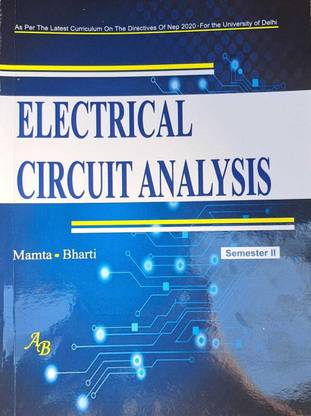Circuit Analysis Circuit Diagram Circuit theory is the cornerstone of electrical engineering, providing the rules and methods for analyzing electrical circuits. This page delves into the principles of circuit analysis, including Kirchhoff's laws, Thevenin's theorem, and Norton's theorem. Circuit analysis plays a pivotal role in various fields, including electrical engineering, electronics, telecommunications, and even biomedical engineering. It empowers engineers and scientists to design, troubleshoot, and optimize electrical circuits for a wide array of applications, from simple household appliances to complex communication

Learn the basics of electrical circuit analysis, transient response, three phase circuits, locus diagrams and network parameters. Download the lecture notes prepared by Karimulla Peerla Shaiq, Associate Professor of EEE at MRCET. Ohm's Law stands as both the simplest and most fundamental principle in the world of electrical circuits, making it a cornerstone of electrical engineering and circuit analysis. As we proceed further in this series, we'll transition from theory to real-life practical implementations of the concepts, which will require experimentation on hardware. Build and simulate circuits right in your browser. Open: Ultimate Electronics: Practical Circuit Design and Analysis. Electronics Questions and Answers from the CircuitLab Community. 2. answers 0. Electrical Issues in Tractors . March 04, 2025. 2. answers 0. comments

Introduction of Electrical Circuit Analysis Circuit Diagram
Basic DC electrical circuit analysis. Basic DC circuit analyses techniques, basic electronic devices and their applications. Electronic device recognition and their common functions on printed circuit boards - a pictorial tour. Appendix A . Solutions for self-assessment problems . Appendix B . Common units and unit conversion factors . Appendix C Case 1: If a voltage source is connected between the reference node and a non-reference node, set the voltage at the non-reference node equal to the voltage of the voltage source. In the circuit below, for example,. Analysis is somewhat simplified by this knowledge of the voltage at this node. Case 2: If the voltage source (dependent/independent) is connected between two non-reference nodes We will use three physical quantities in our analysis of electrical circuits: current, voltage, and resistance. Current is the flow of electrical charge from one place to another. Electrons flowing through a wire or through some other electronic device comprise a current. In an electrical circuit, one node is usually chosen as a reference
